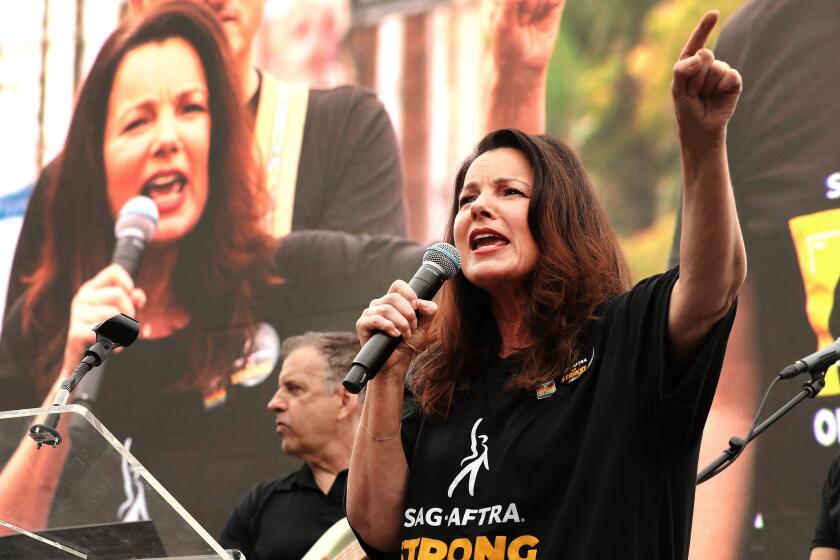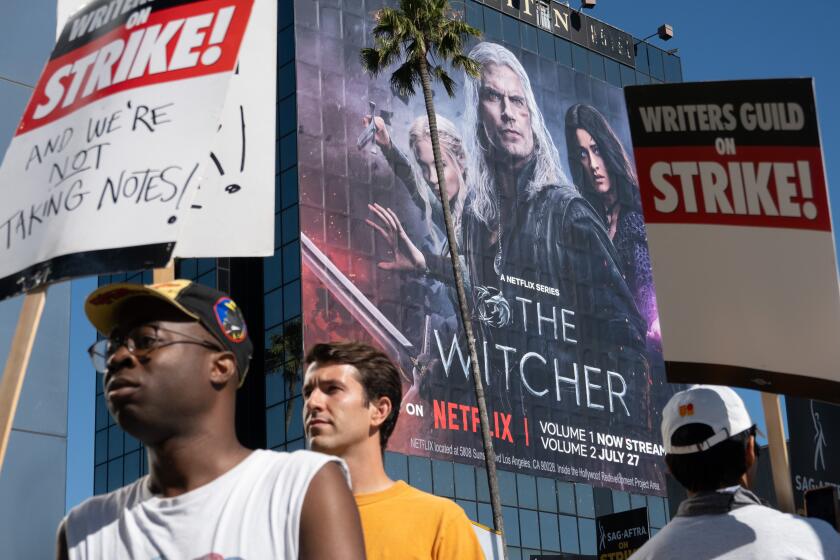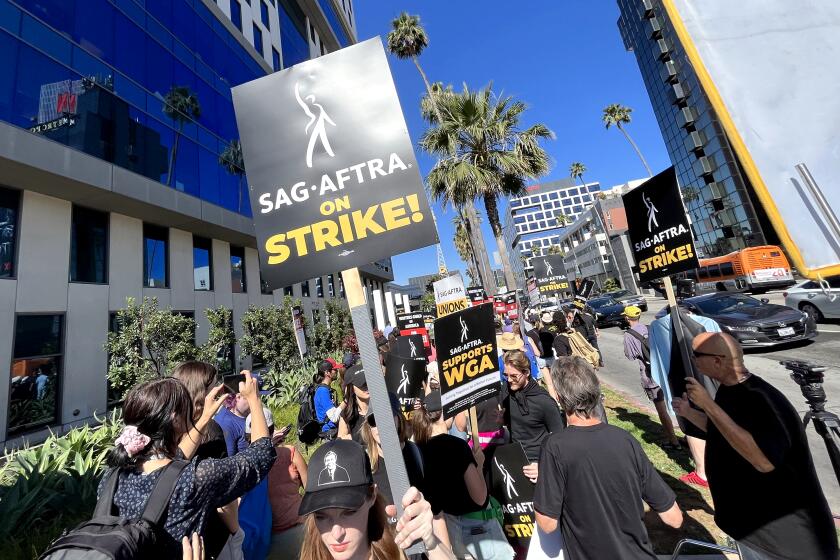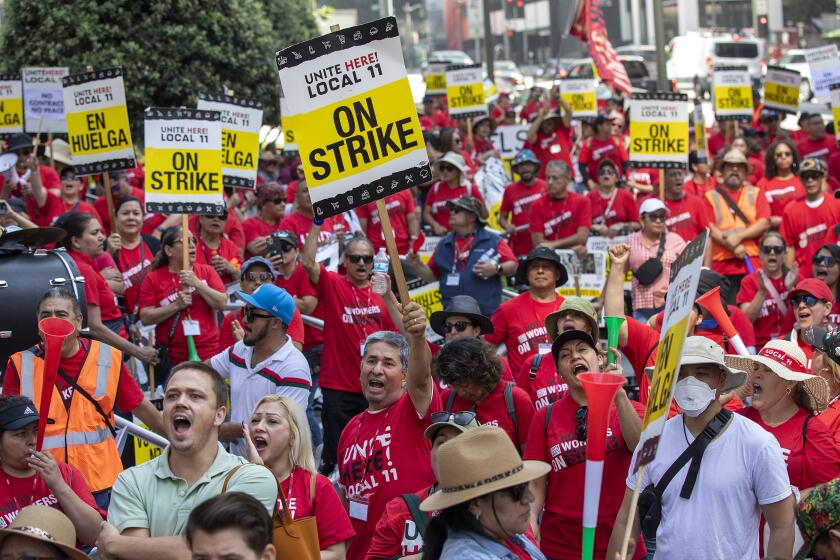Editorial: Finally, Hollywood is back to work. Ending the strikes is good for L.A.
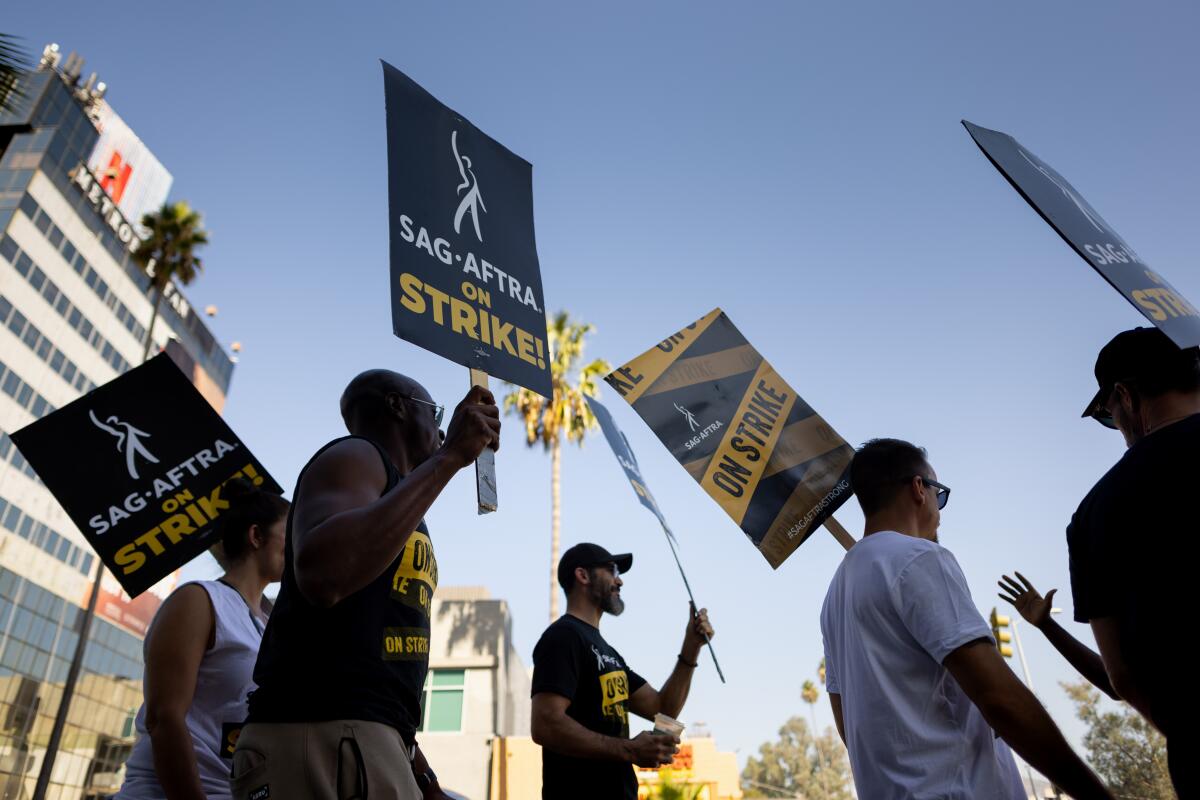
- Share via
Lights, camera, action — relief. After a record-breaking 118-day strike, Hollywood film and television actors were allowed to go back to work Thursday after their union reached a tentative deal with the major studios.
It’s not an overstatement to say that the news prompted exhalations across Los Angeles. Film and television production, a staple of the regional economy, nearly came to a halt over the last six months after the Writers Guild of America went on strike in May and the Screen Actors Guild-American Federation of Television and Radio Artists hit the picket lines in July.
The writers reached a deal in late September, but the industry remained largely closed for business while the actors and studios continued to negotiate.
By forcing the writers’ and actors’ strikes, the studios cost the California economy more than $5 billion and caused untold anguish. Those wounds won’t heal overnight.
The work stoppage not only affected the writers and actors, but also the camera operators, set decorators, production assistants and other crew members who were sidelined, as well as the businesses and their employees who rely on industry spending, including restaurants, dry cleaners and hotels. The two strikes together took an estimated $7-billion economic toll.
Still, union leaders have argued the gain was worth the pain; this year was an inflection point for the industry and that they had no other recourse in trying to reverse a decline in their members’ livelihoods. The writers’ and actors’ strikes were part of a wave of labor actions this summer across different industries, including walkouts among workers at hotels, automakers and hospitals. The resurgent labor movement has been fueled by a concern that pay has stagnated and working conditions have deteriorated, and that workers need to demand more from their employers, after years of accepting less.
The big players in the industry control production and distribution, an echo of the old studio system. The Justice Department could use the same solution that it did in the ‘40s.
The deal achieves much of what SAG-AFTRA leaders pushed for to ensure acting could remain a sustainable career for members. The union said the contract is worth $1 billion and includes higher pay and greater contributions to health and pension plans, increased residual payments for shows streamed online, and new rules for actors’ consent and compensation on the use of artificial intelligence.
That last one — rules on the use of AI — proved to be a big sticking point for the union and for the Alliance of Motion Picture and Television Producers, which includes Netflix, Amazon, Apple, Disney, Discovery-Warner, NBC Universal and Sony. The actors and writers both pushed for limits on replacing human contributions and compensation if their work or likeness is used. Initially, the studios balked at including such language in the contracts but they eventually came around.
SAG-AFTRA members are willing to sacrifice the pay and exposure they need right now because actors are tired of getting a bad deal.
In many ways, the deal is a win for both sides. It provides stability and clarity as technology and consumer media habits are rapidly changing.
For the actors, the deal begins to reverse trends in compensation and working conditions that the union warned made it difficult to maintain a “middle-class lifestyle working as a performer.” The streaming business model hurt performers’ income by paying less in residuals (fees for re-aired shows) than traditional broadcasting, and with short seasons and long hiatuses between seasons, made it harder for actors to maintain stable work with solid pay.
Strikes this “hot labor summer” show that U.S. workers want to work to live, not live to work. It’s a discussion that’s worth having.
Still, there are significant challenges ahead. Industry analysts have predicted fewer jobs for actors and writers in coming years as streaming services, under pressure from Wall Street to cut costs and deliver reliable profits, reduce the number of shows and movies they order. Services are also likely to raise prices, which could reduce subscribers, and remove more shows from their platforms, cutting residual payments.
Plus, contracts expire next summer with the union that represents truck drivers, film editors, set decorators and other crew members. Those people have already been out of work for months because of production shutdowns and it would be devastating to have another strike next year.
There is now a path toward progress created by the writers’ and actors’ deals with the studios.
Hollywood is now opening up for business again, and it should stay open, with the pay, benefits and stability that will ensure the entertainment industry remains a creative force and economic powerhouse that Los Angeles and California can rely upon.
More to Read
A cure for the common opinion
Get thought-provoking perspectives with our weekly newsletter.
You may occasionally receive promotional content from the Los Angeles Times.
